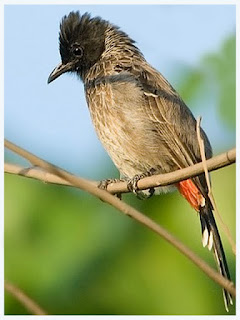
This nest in above photograph is built in a Bougainvillea plant in my friend's house just in front of the main gate. I watched it regularly and taken few shots without disturbing the bird.This photograph is taken by my Nikon F801 camera with a 200 mm lens.This is a bright example of man and wildlife thriving side by side.Enjoy the bird watching and know the bird in your back yard.
![Reblog this post [with Zemanta]](http://img.zemanta.com/reblog_e.png?x-id=14419c4a-761b-46ed-b102-a4d860875dec)

















